Recently, the most talked-about topic in China has been "APEC." While "APEC Blue" is widely recognized, there's another important aspect that shouldn't be overlooked: the concept of "interconnection" emphasized by President Xi Jinping during APEC. This idea has captured the attention of companies in the Internet of Things (IoT) sector. At a recent technical forum hosted by ARM, the company’s efforts in the IoT space have once again drawn industry interest. ARM isn’t just looking to replicate its success in the software domain with its core technology; instead, it aims to use the "leverage principle" to unlock the "tip of the iceberg," revealing the vast potential of the IoT market.
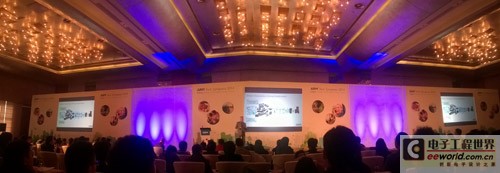
Figure 1: 2014 ARM Technology Forum site
Opening the "Tip of the Iceberg"
Today, many companies are still operating in isolation, trying to fit into various ecosystems. However, the business ecosystem is continuously evolving—from centralized systems to open-source platforms and community-driven models. Community-based ecosystems offer advantages such as self-control, openness, and innovation. But what is the most complete IoT ecosystem we see today? Dr. John Heinlein, Vice President of Global Marketing at ARM, stated, "What we've seen so far is just the tip of the iceberg. There are much more complex and grand ecosystems beneath the surface. Similarly, technology can be very complex. Companies may seem stuck, like Alibaba, but everything is not as simple as it appears. Once you dive deeper into IoT, you'll find it to be a diverse and complex field that will drive new growth."
Take shared photos as an example. For the average user, it's a common activity—capturing images, uploading them to social media, and sharing with friends. But behind this simplicity lies a chain of technologies: smartphones, data transmission, signal processing, base stations, RF, computing, storage, and mobile networks. Each step might involve ARM technology. ARM partners are innovating at every level, from chip design to software, tools, and middleware. With its strong ecosystem, ARM is confident in opening up the "tip of the iceberg" and exploring the vast resources hidden beneath it.
Just Works
Today, home networks seem to require advanced IT skills. But what if you're a child or an elderly person? Can you still enjoy smart homes? Smart homes should be easier to use, and only by simplifying the experience can the market grow faster. Dr. Heinlein referenced Douglas Adams' famous quote from "The Hitchhiker's Guide to the Galaxy": "We are often dragged down by technology. What we really want is something that just works." He believes that ARM and other tech companies don't just release technology—they provide solutions that work seamlessly. The latest release of the ARM Mali Multimedia IP Suite is a great example of this ease of use.
Of course, simplicity on the surface often hides complexity underneath. Chip design, board design, and software all contribute to this. For instance, EDA tools help streamline chip design, moving from manual layout to CAD and now to integrated hardware-software design, enabling faster development. Dr. Heinlein said, "ARM and TSMC are working together on the 10nm FinFET process for 64-bit ARM architecture processors. From 0.25um to 10nm is not just a process advancement—it's the result of years of technological progress, including logic, analog, embedded flash, RF, image sensors, high voltage, MEMS, and power ICs."
ARM mbed Solves Resource Challenges in the IoT Era
Dr. Heinlein continued, "Improvements enable more complex systems, leading to new solutions, including new consumers, applications, and components. No big data comes without small data accumulation. ARM mbed OS connects to the mbed device server through open standards, then to IoT services or applications, ensuring secure end-to-end small data. These network data objects and management eventually form big data."
He also discussed the challenges of next-generation infrastructure, such as managing data requirements, energy constraints, bandwidth deployment, and increasing density, which foster new business models. He noted that over 90% of current IoT ecosystems are invisible, yet they hold significant potential (like emerging creators), and these should be brought into the visible market.
Michael Horne, VP of Business Strategy and Operations at ARM's IoT division, said, "In the 20th century, processors were scarce resources. In the IoT era, the lack of resources is about energy and productivity—finding ways to get to market quickly. Resolving current tech needs requires smarter, scalable, and system-driven approaches. It should change the market through investment in standards, simplify innovation through managing complexity, and deliver products that are robust, scalable, and secure. ARM is committed to providing connectivity, security, and simple IoT products. The ARM mbed IoT Device Platform includes mbed OS, mbed device server, and the mbed ecosystem, offering five key advantages: productivity, security, connectivity, management, and efficiency."
The mbed OS is a free operating system designed for Cortex-M based hardware, featuring security, communication transport, and device management. Its advantages include the fastest time to market, low-power design, comprehensive security solutions, highest connectivity standards, and internal device management.
Mbed device servers offer direct integration, regular connection support, overall security management, leading open-source standards, and lightweight management.
The mbed ecosystem partners include cloud providers, system and channel partners, and chip manufacturers. These different areas share a vision and open standards through the mbed IoT device platform, enabling commercial deployment of IoT devices and services.
In the end, you can use mbed + ARM chips + Sensinode to design IoT applications, leveraging shared security, connectivity, and driver resources, such as smart cities and smart homes, through the mbed OS.
The Temptation of "Double Eleven"
Mr. Pan Aimin, Chief Architect of Alibaba YunOS, gave a keynote speech at the ARM Technology Forum on the development, opportunities, and challenges of the mobile operating system in the Chinese market. He first highlighted the impressive Alibaba "Double Eleven" event, where transaction volume exceeded 57.1 billion yuan, with 40% of transactions coming from mobile platforms. This is meaningful data for the Chinese mobile market, directly linked to the economy and reflecting Alibaba's past efforts in mobile platforms. Mr. Pan Aimin believes that mobile OS is becoming a focus for the Chinese government and industry. China's entire industrial chain is complete, from mobile chip companies, semiconductor devices, market capacity, to system talents. The iterative rhythm of the entire industry chain has kept pace with international standards. With the rapid development of the mobile internet, combined with cloud computing and the Internet of Things, plus lessons from the Chinese PC era, and the openness of hardware from companies like ARM, China's mobile OS can find its place in the future. YunOS will leverage the "cloud" concept, including cloud services and payment support, as well as the mobile internet ecosystem (ARM, chip vendors, terminal manufacturers, design companies, etc.), to win more markets with an app mode + service model + user experience approach.
Accelerate the Pace of Mobile Innovation
More connectivity is driving a huge shift, said Dennis Laudick, Vice President of Marketing for the ARM Multimedia Processors division: "IoT will change all aspects of society, and with the rapid proliferation of consumer electronics-related technologies, smartphones have become major computing devices, infrastructure, and servers. The first ARM-based server is expected to have an average of 50 connected devices per household by 2020. Companies including ARM will release more products to support the pace of mobile innovation, offering greater capabilities, higher performance, lower power consumption, tools, software, and reduced development time."
ARM envisions that Cortex and mbed technology can truly connect objects in the future. Of course, this complex task cannot be accomplished alone. Dennis said, "The unique advantages of our partners can make every link of the entire ecosystem faster. Including SoCs, hardware and interfaces, operating systems, middleware, and applications. ARM provides a common foundation for the entire ecosystem, namely system architecture, software, and proven IP." For example, ARM's Juno reference development platform for 64-bit Android integrates many of ARM's advanced technologies (including the ARMv8 instruction set) and is fully integrated into a single board. The product supports the big.LITTLE asynchronous architecture with two Cortex-A57s, four Cortex-A53s, and the latest Mali T-624 core. As another example, ARM adds intelligent power distribution (IPA) to the Linux kernel (including Android).
Mali Shows What You Want
Images and videos are the "souls" of many applications in the Internet of Things. According to statistics, 90% of device content revenue comes from games, which are becoming increasingly complex. 53% of mobile data is video, and 73% of mobile devices have HD or higher resolution. With the increase in display complexity and resolution, the need for new multimedia IP is imperative for achieving high energy efficiency, high performance, low power consumption, and fast time to market. ARM's new integrated Mali multimedia IP suite (including the Mali-V550 video accelerator, Mali-DP550 display processor, and Mali-T800 graphics processor series) efficiently provides rich visual content and displays with leading processors. Dennis said, "Last year, Mali had 400 million shipments, and more and more mobile devices of all grades are using Mali. The new Mali multimedia IP suite enables ARM partners to develop diverse multimedia systems, get to market faster, profit from system bandwidth efficiency, seamlessly integrate software, focus on differentiation, and reduce risk."
ARM provides multimedia IP at a system level, enabling chip partners to save energy through system-wide bandwidth-saving technologies such as ARM Frame Buffer Compression (AFBC) and Fully Adaptive Texture Compression (ASTC). Technologies including Smart Elimination (TE) and Smart Synthesis (SC) are also adopted by all Mali IP blocks, avoiding duplication of work and ensuring better energy-saving features. In addition, the Mali-V550 and Mali-DP550 also benefit from Motion Search Elimination (MSE), which reduces bandwidth by up to 35%.
The next-generation Mali graphics processor supports mobile diversity, achieving the perfect balance of performance and efficiency. It supports 4K and 10-bit YUV, resulting in 55% better 3D gaming performance and 60% bandwidth savings. The Mali-T820 graphics processor is optimized for entry-level products, with performance density up to 40% compared to the Mali-T622. The Mali-T830 is 55% better than the Mali-T622, while the Mali-T860 is 45% more power efficient than the Mali-T628. It meets the most demanding consumer needs and delivers the ultimate visual experience on high-performance mobile devices. The Mali-V550 is ARM's first video IP with multi-standard codec. Its multi-standard codec includes HEVC (H.265) capable of encoding and decoding in a single core. Its single core can resolve up to 1080p at 60 frames per second, and 8 cores can support resolutions up to 4K at 120 frames. The Mali-DP550 supports up to 7 layers of image compositing optimized for image rendering, enabling users to implement more dynamic and lifelike user interfaces. It can share tasks for existing graphics processors, transferring compositing, scaling, rotating, and post-processing tasks to dedicated processors to provide enhanced functionality.
Dennis added, "Mali also embodies the concept of 'just works,' allowing customers to use it immediately without being tied to deep technical difficulties. The future should be the most suitable SoC for each application. The new Mali Multimedia IP Suite represents ARM's expansion in distributed processing, ensuring that vision-centric content runs on the most appropriate processor. Of course, ARM cannot do it alone, requiring partners in the ecosystem to collaborate together."
Since 1991, the history of ARM processors has exceeded 50 billion, and it is now working toward 100 billion. When will that happen? I believe it won't be too long, and new opportunities from medical, education, smart homes, automobiles, and other fields, along with the "iceberg" beneath, will contribute to 100 billion ARM chips.
Postscript: During lunch, the reporter overheard a conversation between two engineers. The key word was “too horrible.†ARM’s ambition has truly shocked the engineers in the industry, and hopes that it can leverage its own strengths and the capabilities of its partners to explore the unpredictable "iceberg." Welcome to read the reporter’s July article, "The Internet of Things Carries the Ambition of ARM Unified Hardware and Software."
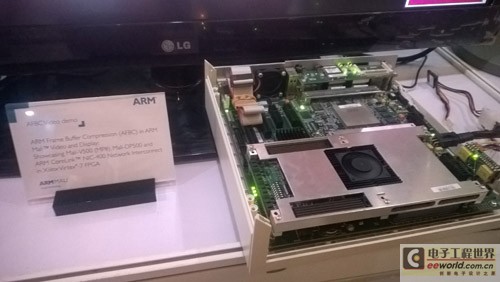
Figure 2: ARM Mali video display demo
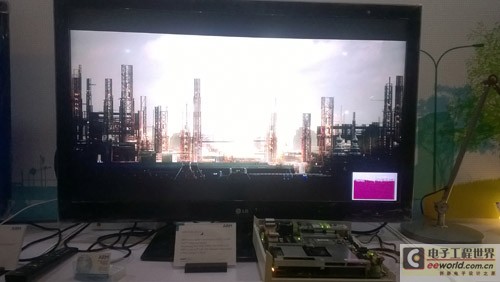
Figure 3: ARM Mali video display demo
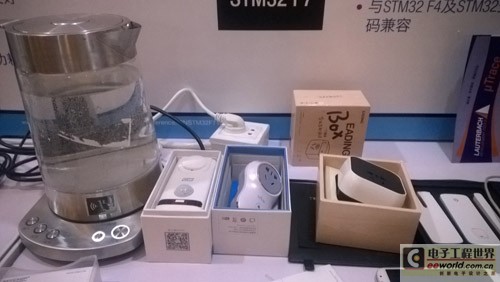
Figure 4: Various ARM-driven smart devices
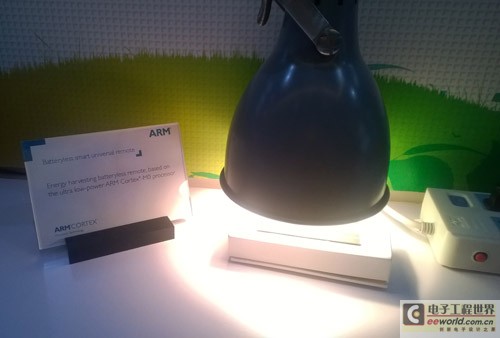
Figure 5: ARM Cortex-M0 energy saving solution
Full Power Inverter,Solar Power Inverter,Battery Inverter For Pumps,24 Volt Inverter Pure Sine Wave
GuangZhou HanFong New Energy Technology Co. , Ltd. , https://www.gzinverter.com